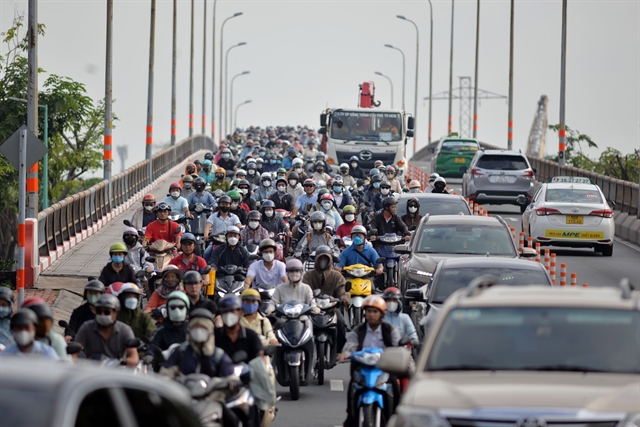HCM CITY ( WNAM MONITORING ): MHCM City is taking bold steps to tackle its growing air pollution problem, announcing plans to establish low-emission zones (LEZs) and gradually phase out high-polluting vehicles over the next decade.
At a seminar on Tuesday, the city’s Department of Construction presented findings from a major study on emission control, alongside a roadmap for implementing low-emission areas, transitioning vehicles to cleaner energy and providing financial support for both businesses and citizens.
Under the proposed plan, the first LEZ will cover the central urban area – bounded by 15 bridges and 20 main roads – and the Rừng Sác Road.
Within these zones, trucks and motorbikes below emission standard Level 2 and cars below Level 4 would face restrictions or bans. Electric and ‘green’ vehicles, as well as emergency and priority services, would still be allowed to operate.
Starting in 2026, the city will limit the operation of gasoline- and diesel-powered ride-hailing and transport-service vehicles that fail to meet emission standards. A pilot restriction will also be introduced along Rừng Sác Road, between Bình Khánh Ferry and Duyên Hải Street.
From 2027 to 2030, widespread emissions testing for motorbikes will begin, with gradual restrictions on non-compliant vehicles entering the city centre.
By 2031, the low-emission area will expand outward to Ring Road 1, bounded by Phạm Văn Đồng, Nguyễn Thái Sơn, Bảy Hiền, Hương Lộ 2 and Nguyễn Văn Linh Streets.
From 2032 onwards, every vehicle entering the zone must meet the city’s highest emission standards.
To ensure compliance, HCM City plans to install 58 license-plate recognition cameras across the central area and another nine along Rừng Sác Road. These cameras will automatically detect and fine vehicles that do not meet emission standards.
Authorities have also proposed that the Ministry of Construction add an official ‘Low-Emission Zone’ traffic sign to the national regulations so that drivers can easily recognise restricted areas marked with the LEZ symbol at entry and exit points.
The LEZ plan rests on three main pillars: vehicle electrification, emission zoning and supportive infrastructure and policy.
The city intends to prioritise converting buses, taxis, ride-hailing vehicles and trucks to cleaner energy. By 2030, it aims to launch 78 new bus routes using clean fuels – adding nearly 2,850 vehicles – linked to networks of public bicycles and electric motorbikes.
In the next phase, residents, organisations and businesses will be encouraged to switch to electric vehicles through generous incentives: a full registration-fee waiver for electric vehicles used in transport services; a 50-per-cent cut in road maintenance and license-plate renewal fees for electric cars; and cash support equal to 10 per cent of the value of new motorbikes (up to US$190).
Those scrapping old vehicles may receive 70 per cent of their remaining value as compensation. Poor households will get full support for the conversion, and near-poor households will receive 80 per cent.
According to Bùi Hòa An, Deputy Director of the Department of Construction, the LEZ initiative is still in the ‘encouragement phase’ rather than a strict ban.
“Vehicles that meet acceptable emission levels will still be allowed to circulate within the low-emission zone. It’s not only electric vehicles that can enter,” he said.
He added that with the roadmap extending to 2029, businesses would have enough time to adapt.
“The city will support them through loan programmes, interest-rate subsidies and other financial mechanisms,” Bùi said.
The project will be submitted to the City People’s Council and is expected to roll out in early 2026.
Following its recent administrative merger, HCM City now has more than 14 million residents and is struggling with severe traffic-related pollution.
The consulting report revealed that the city’s one million cars and 7.3 million motorbikes are responsible for 88 per cent of nitrogen oxide (NOx), 99 per cent of carbon monoxide (CO), 79 per cent of sulfur dioxide (SO₂) and 88 per cent of particulate emissions from transport.
Average fine-dust (PM2.5) levels hover around 31 micrograms per cubic metre – six times higher than the World Health Organisation’s recommended limit. The resulting health and productivity losses are estimated at more than VNĐ3 trillion đồng ($114 million) per year, roughly 0.25 per cent of the city’s GRDP.
If implemented as planned, the low-emission zone strategy could mark a turning point for Việt Nam’s largest metropolis – a decisive step toward cleaner air, smarter mobility and a greener future for millions of its residents.


